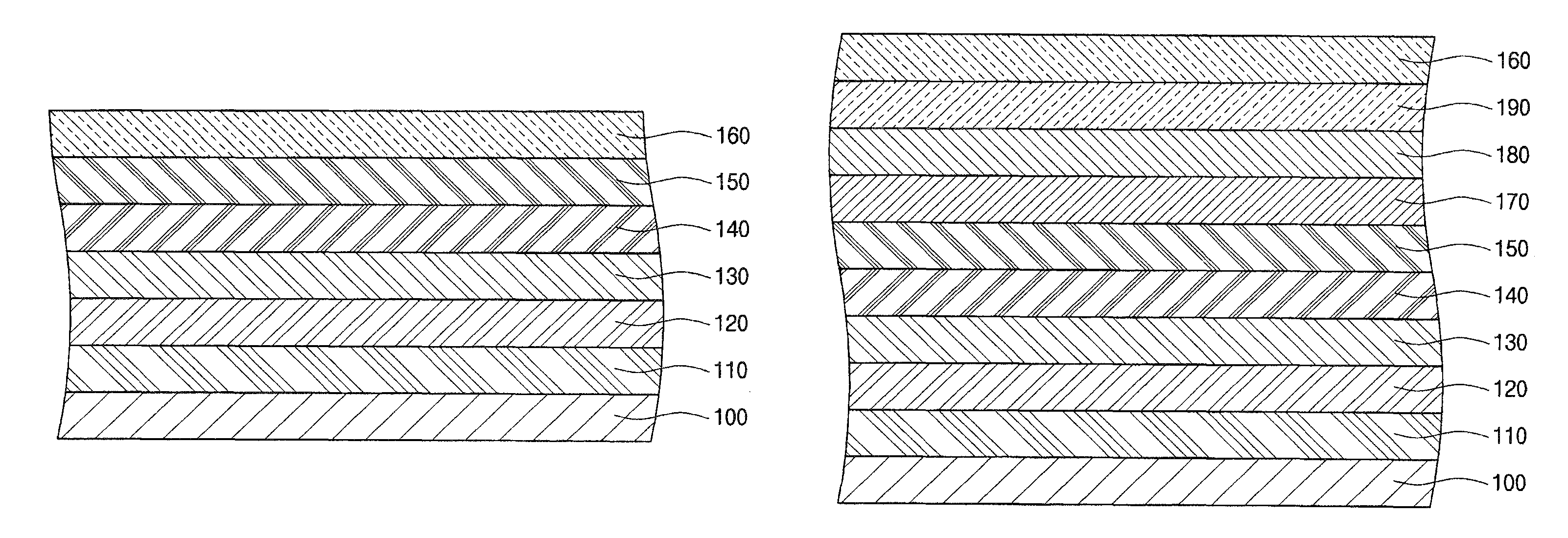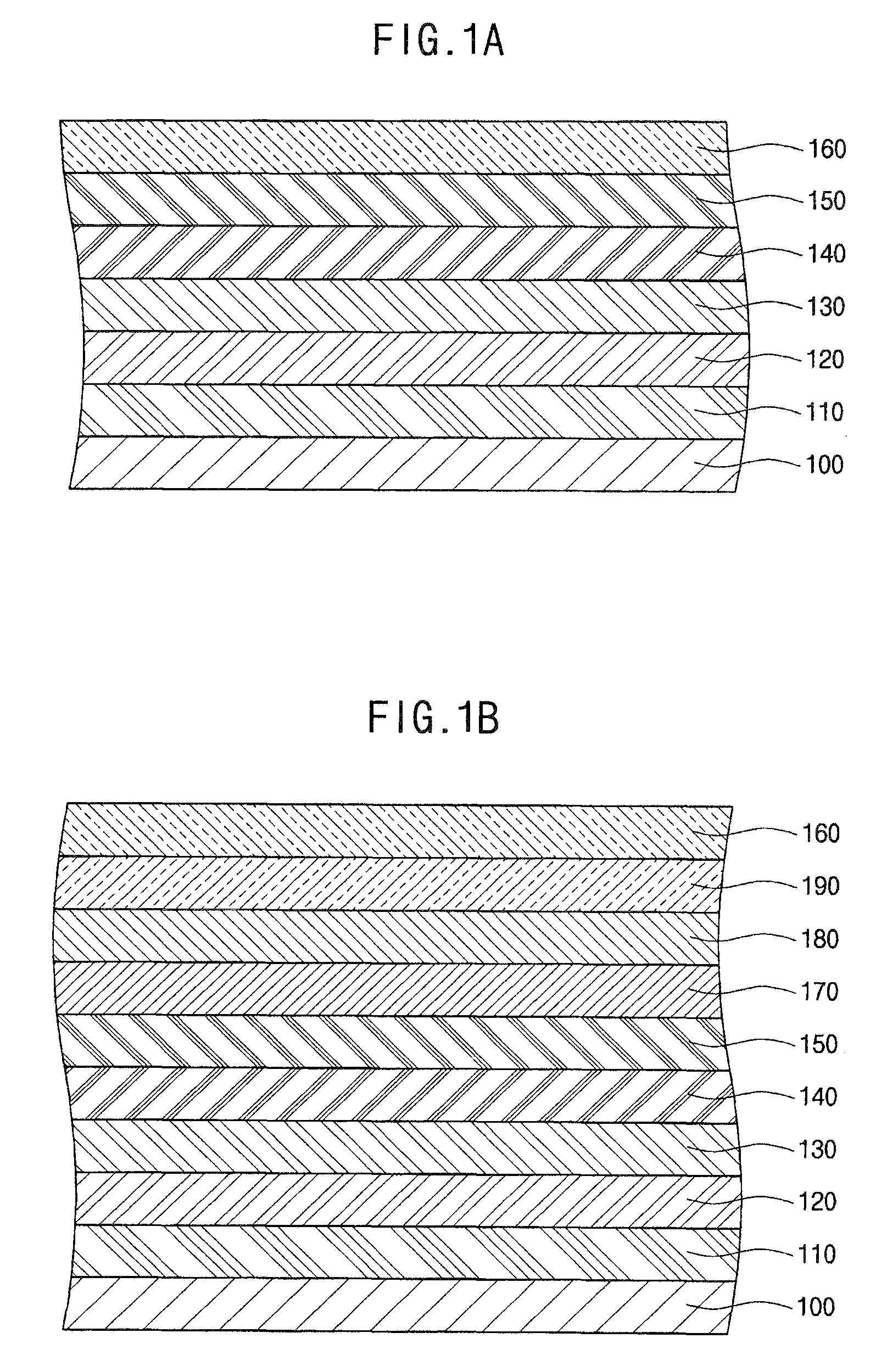Organic light emitting diode and method of fabricating the same
a light-emitting diode and organic technology, applied in the direction of discharge tube/lamp details, discharge tube luminescnet screens, organic semiconductor devices, etc., can solve the problems of limiting the efficiency and achieve the effect of increasing the luminance and life span of oleds and facilitating current supply
- Summary
- Abstract
- Description
- Claims
- Application Information
AI Technical Summary
Benefits of technology
Problems solved by technology
Method used
Image
Examples
experimental example
[0040]A first electrode was formed of ITO to a thickness of about 1000 Å. Thereafter, a hole injection layer was formed of mTDATA on the first electrode to a thickness of about 600 Å, and a first hole transport layer was formed of NPB on the hole injection layer to a thickness of about 150 Å. An intermediate layer was formed of MoO3 on the first hole transport layer to a thickness of about 50 Å. A second hole transport layer was formed of NPB on the intermediate layer to a thickness of about 100 Å. A red phosphorescent emission layer was formed on the second hole transport layer utilizing a mixture of CBP, as a host, and 12% by weight of Ir(piq)3, as a dopant, to a thickness of about 300 Å. An electron transport layer was formed of Alq3 on the red phosphorescent emission layer to a thickness of about 350 Å. Subsequently, an electron injection layer was formed of LiF on the electron transport layer to a thickness of about 5 Å. A second electrode was formed of Al on the electron injec...
PUM
 Login to View More
Login to View More Abstract
Description
Claims
Application Information
 Login to View More
Login to View More - R&D
- Intellectual Property
- Life Sciences
- Materials
- Tech Scout
- Unparalleled Data Quality
- Higher Quality Content
- 60% Fewer Hallucinations
Browse by: Latest US Patents, China's latest patents, Technical Efficacy Thesaurus, Application Domain, Technology Topic, Popular Technical Reports.
© 2025 PatSnap. All rights reserved.Legal|Privacy policy|Modern Slavery Act Transparency Statement|Sitemap|About US| Contact US: help@patsnap.com



